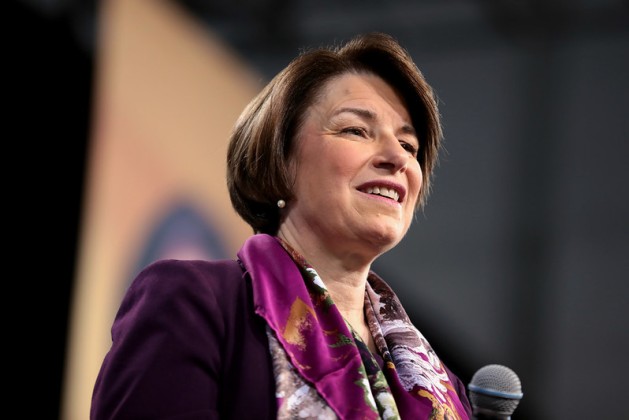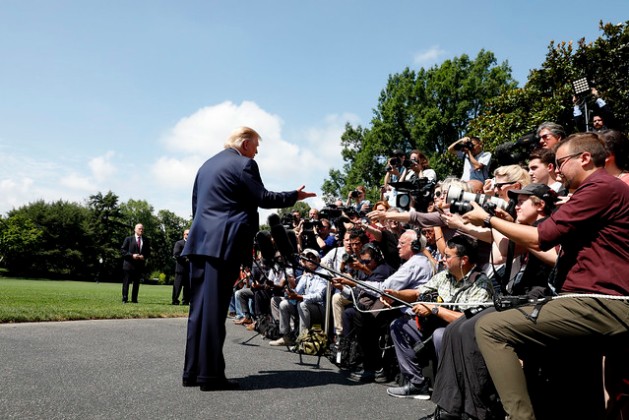
Joi Ito. Photo (cc) 2017 by the MIT Media Lab.
Previously published at WGBHNews.org.
An ethical breakdown at one of our great universities. A media maelstrom involving secret emails and possible conflicts of interest. And hints that there may be more to come.
The weeks-long drama over former MIT Media Lab director Joi Ito’s financial entanglements with the late financier Jeffrey Epstein, who recently committed suicide while facing charges that he had sexually abused underage girls, came to a sickening head over the weekend. Ito resigned after Ronan Farrow reported in The New Yorker that Ito and the Media Lab had taken more money from Epstein than he had previously admitted to, and had gone to great lengths to conceal the source of that money — with lab employees referring to Epstein in emails as “Voldemort” and “he who must not be named.”
Despite Ito’s departure, we may be still closer to the beginning of this story than the end. Many unanswered questions remain. Here, then, are three lines of inquiry that I hope will be pursued in the days and weeks ahead.
• How did Ronan Farrow manage to do it again? Followers of the technology journalist Xeni Jardin knew The New York Times was working on a major story about Ito’s ties to Epstein. Those ties became a public issue in mid-August, at which point one of the lab’s most prominent researchers, Ethan Zuckerman, announced he would leave in protest. Adding to the buzz about the impending Times story was Ito’s status as a member of the New York Times Co.’s board.
The Times’ story came out last Thursday. In the main, it was sympathetic to Ito, who was cast as apologetic for his ties to Epstein. Ito also made it clear he was angry that the lab’s co-founder, Nicholas Negroponte, had strongly defended Ito’s decision to take Epstein’s money, a move that Ito believed had undermined his own attempts to make amends. The Negroponte angle had been reported the day before by the MIT Technology Review.
A day later Farrow, who has broken a number of #MeToo stories, blew Ito out of the water with documents provided by a whistle blower, former Media Lab employee Signe Swenson. Farrow’s article contained some harrowing details. One that struck me in particular was that, while Epstein was touring the lab, female employees talked about what they should do if one of the two attractive young women who had accompanied Epstein came to them and asked for help.
Within hours of publication on The New Yorker’s website, Ito had resigned from MIT and from the Times Co.’s board.
How could it be that the Times did not have the documents or the details that Farrow had? “I told the @nytimes everything,” tweeted Jardin. “So did whistleblowers I was in touch with inside @MIT and @Edge [another organization she’s been keeping tabs on]. They printed none of the most damning truths. @joi is on the board of the NYT. THANK GOD FOR @RonanFarrow.”
https://twitter.com/xeni/status/1170352857952002048
Was Jardin saying that the Times had the same emails and documents as Farrow but had chosen not to report on them? Not explicitly — but New York University journalism professor Jay Rosen, a prominent media observer, thought that’s what she meant, and he said so on Twitter. It turned out that was not the case, and Rosen responded by issuing a retraction and correction. Rosen was then called out by the Times’ Michael Barbaro, host of “The Daily,” who tweeted at Rosen: “How about doing a lot more reporting and a lot less tweeting.”
There but for the grace of God etc. I was among those who retweeted Jardin’s “THANK GOD FOR @RonanFarrow” tweet, although I refrained from publicly assuming the Times had the documents. Still, that seemed to be a reasonable interpretation of what Jardin was saying.
So what’s next? I think the Times owes us an explanation about what it had and what it didn’t have. I don’t believe the news side would cover for a board member (if anything, the reporters and editors would probably have liked to claim a pelt), but the fact remains that the Times got beaten on an important story with a tie to its own corporate board and that it had devoted considerable resources to.
• Was Ito’s behavior an aberration — or business as usual? Not to give Ito a pass on dealing with someone as uniquely awful as Epstein. According to all reliable accounts, Epstein destroyed the lives of many girls and young women. Still, Ito is hardly the first person to accept money from dubious sources.
For instance, MIT (and Harvard) have played host to Crown Prince Mohammed bin Salman of Saudi Arabia, believed by U.S. intelligence to be responsible for the murder of Washington Post journalist Jamal Khashoggi. (The visit took place before Khashoggi’s death, but bin Sultan was already developing a reputation as a tyrant.) Some of the top cultural and educational institutions in the country have wrestled with what to do about donations from the Sackler family, whose fortune derives from sales of OxyContin.
It’s probably fair to say that within the world of philanthropy, there is an overall sense that one person’s money is as green as another’s, and that there’s no reason not to take it as long as donors understand they are not buying influence. Few hands are clean. For instance, the late David Koch was, for a time, a member of WGBH’s board, a matter of some controversy given his and his brother Charles’ well-funded campaign on behalf of climate-change denial.
A friend of Ito’s, Harvard Law School professor Lawrence Lessig, went so far as to write an essay defending not just Ito’s decision to take Epstein’s money but to maintain Epstein’s anonymity as well. Lessig comes across as genuinely anguished over the events of the past month, so I don’t want to suggest that he made light of the donations. But he does make an interesting argument: that anonymity, rather than being additional evidence of sleaze, was actually appropriate because it prevented Epstein from using his donations to improve his public image.
“I think that universities should not be the launderers of reputation,” Lessig wrote. “I think that they should not accept blood money. Or more precisely, I believe that if they are going to accept blood money …, they should only ever accept that money anonymously.”
Taking a more conventional (and, frankly, more defensible) view was New York Times technology columnist Kara Swisher, who describes herself as a friendly acquaintance of Ito’s. “Mr. Ito’s plummet this weekend was much deserved, certainly swift, and also shocking,” she wrote, adding: “These corner-cutting ethics have too often become part and parcel to the way business is done in the top echelons of tech, allowing those who violate clear rules and flout decent behavior to thrive and those who object to such behavior to endure exhausting pushback.”
Seth Mnookin, a science journalist at MIT, said the Ito-Epstein connection should prompt some soul-searching. “Instead of viewing this as an isolated incident,” Mnookin wrote for Stat, “universities, colleges, and cultural institutions should use it as an impetus to take a difficult look at their own fundraising efforts. Refusing money from a convicted pedophile should be a no-brainer, but it’s time that the larger academic and scientific communities examine our willingness to accept money from donors whose actions directly oppose our values and missions, even if they’re not overtly criminal.”
Some good, tough-minded journalism could help move that process along.
• What are they doing over there? Since its founding some three decades ago, the Media Lab has been celebrated for its innovative spirit. Electronic ink, technology used in the original Amazon Kindle, was developed at the lab. Nicholas Negroponte popularized the idea of the “Daily Me,” a virtual newspaper tailored the interests of the individual reader. Negroponte was also well-known for his “One Laptop Per Child” initiative to bring computer access to poor children around the world.
But what, exactly has the lab done lately? I’m not sure I know. Several years ago Ethan Zuckerman was the co-author of a much-cited study showing that media polarization was mainly caused by right-wingers sealing themselves off from mainstream sources of information. It was important work. But, in general, it strikes me that the lab has a lower profile today than it did at one time.
And that lower profile may be the least of its problems. Several days ago, Business Insider reported that a “personal food computer” developed at the lab does not actually work, and that “staff were told to place plants grown elsewhere into the devices” before they were shown off to unwitting visitors. Is that an anomaly? Perhaps it’s an extreme example. But Justin Peters, a journalist who says that at one time he was smitten with the lab and its ethos, argued in Slate that questionable projects carried out on behalf of its corporate sponsors have become a defining characteristic.
“I realized that the things I had once found so exciting about the Media Lab — the architecturally distinct building, the quirky research teams, the robots and the canisters and the exhibits — amounted to a shrewd act of merchandising intended to lure potential donors into cutting ever-larger checks,” Peters wrote. “The lab’s leaders weren’t averse to making the world a better place, just as long as the sponsors got what they wanted in the process.”
The Business Insider report represents a good beginning. But now it’s time for other news organizations to look into what is actually taking place at the lab — and, more broadly, what happens when academic research is bent to serve the agenda of the titans of industry who fund it.
Talk about this post on Facebook.










